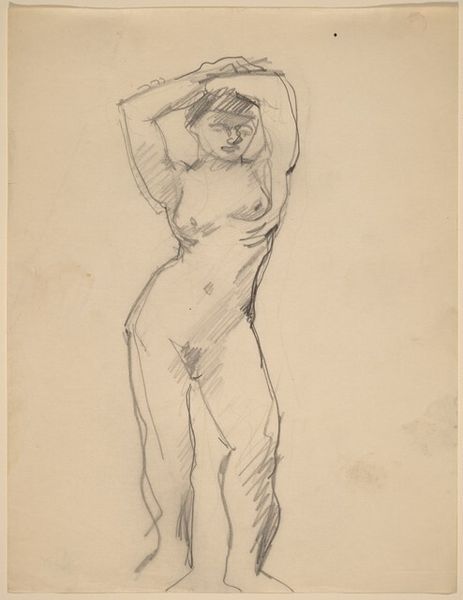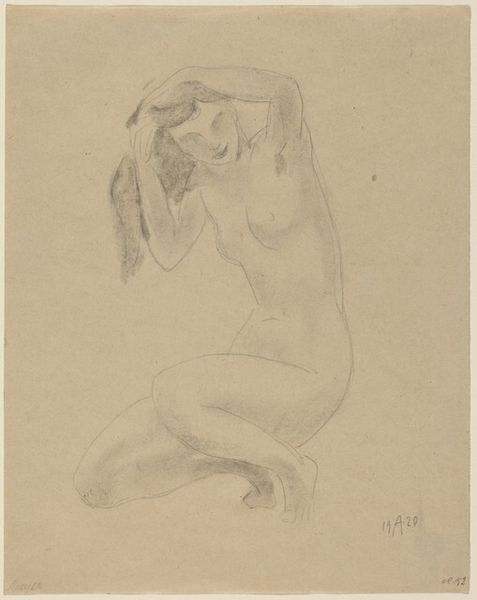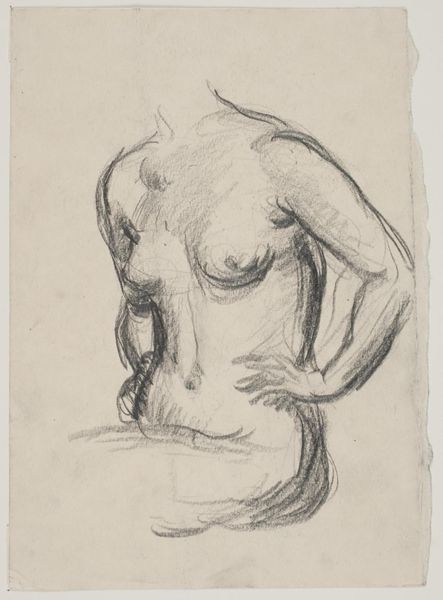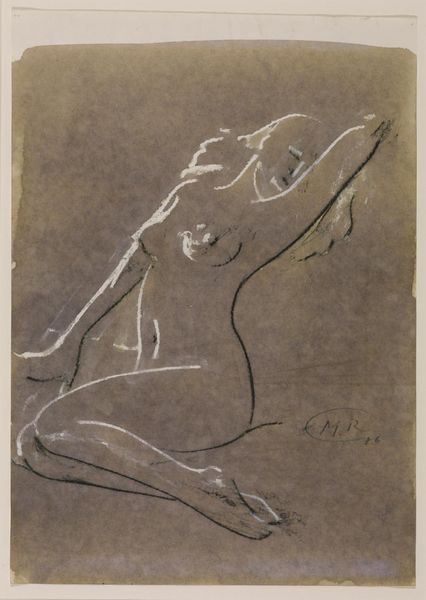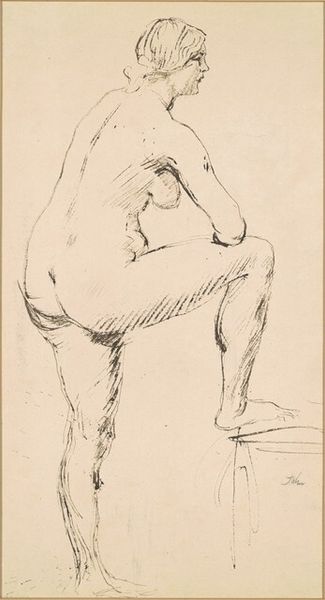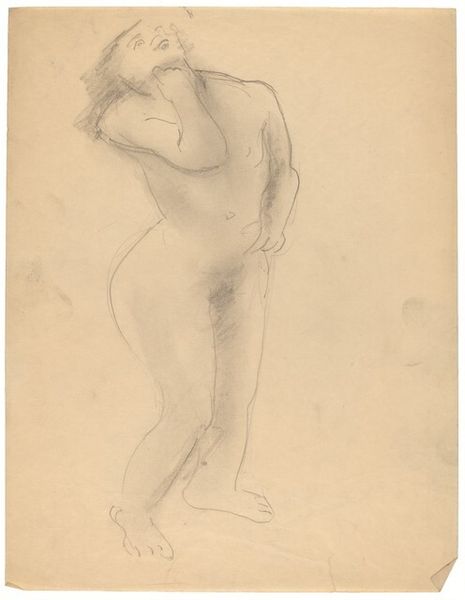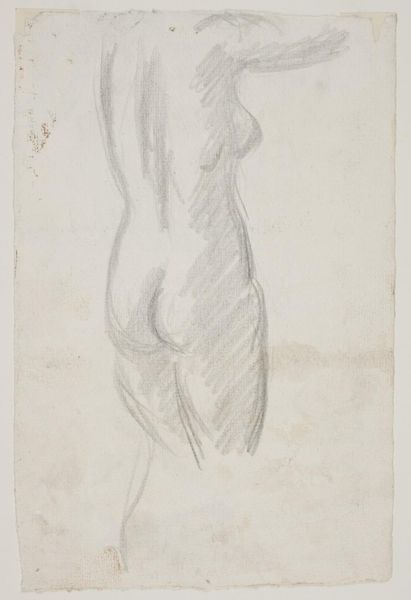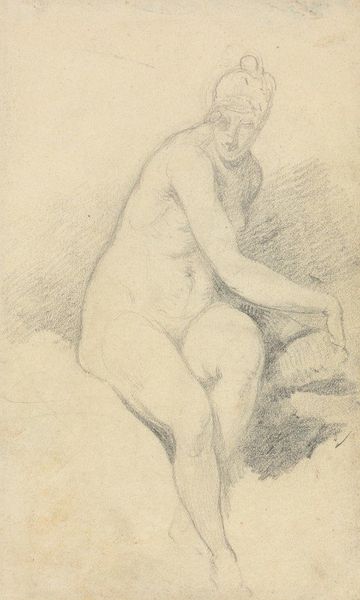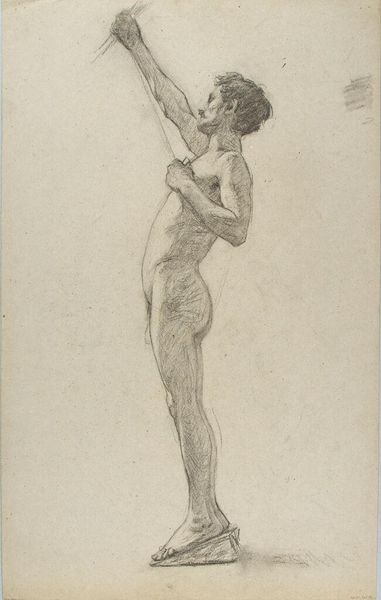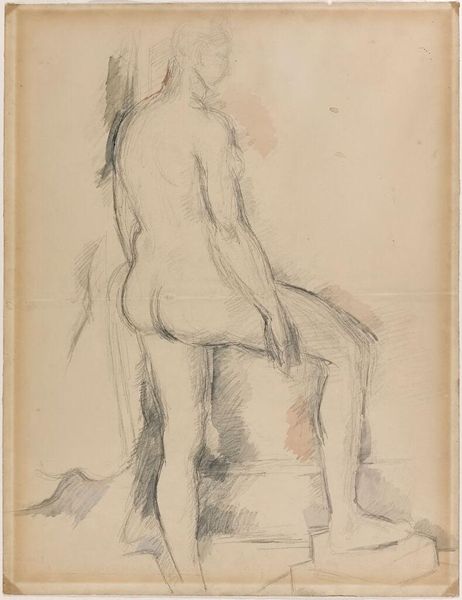
Copyright: Public Domain: Artvee
Editor: This is Edgar Degas' "Bather Sponging Her Knee," likely from around 1883 or 1884. It looks like it’s done with charcoal and pastel. The pose feels so spontaneous and the limited color palette is striking. What do you see in this piece, considering its formal elements? Curator: The immediate aspect that arrests my attention is the dynamic tension created by the convergence of line and form. The deliberate asymmetry in the figure’s stance is crucial. Note how Degas uses the darker charcoal to define the contours, almost sculpting the figure from the paper, juxtaposed with softer pastel strokes which suggest volume and a delicate modeling of the flesh. Editor: I notice the almost harsh, angular quality of the lines against the smoother areas. It’s like he’s playing with opposing textures. Curator: Precisely. This textural dichotomy, this calculated roughness, prevents the work from becoming overly sentimental or idealized. Consider the intentional cropping of the figure; it further destabilizes a traditional reading of the nude. Degas forces us to consider the pure visuality of the body as shape and form, divorced from narrative convention. Editor: So it’s about disrupting the established expectations of the nude figure through its composition? Curator: Precisely. He guides our gaze, shifting it from a merely representational role to a deeply self-conscious act of viewing, bringing us face to face with questions of form, line, and ultimately, the material presence of art itself. Do you notice any areas where the artist seems to draw your attention, maybe inviting us to interpret in some other way? Editor: I see the marks towards the bottom right, and it appears like some of the smudging and coloring leads up toward the upper-left corner. I never considered how it takes some awareness to observe a drawing like this with an intention behind every single pencil and pastel mark. Curator: Indeed. It's in the tension between the carefully observed form and the apparent casualness of the medium that the work truly exists. Editor: It's really given me a new appreciation for how much thought goes into what might initially seem like a simple sketch.
Comments
No comments
Be the first to comment and join the conversation on the ultimate creative platform.

